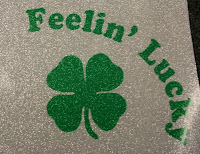Have you ever wondered how your t-shirt was made? Or why some printed shirts look different than others? Or why there are so many printing options when all I want is my logo on a shirt? There are several ways to make a t-shirt with benefits to each. I am sure the first thing that comes to mind is screen printing because this has been around "forever". Screen printing uses open areas of mesh screens (the open area being your logo) that allow plastisol ink to be squeegee-d onto a garment. Once the ink is on the shirt it is "flashed" (partially cured) and layered with another color, or run through a dryer to completely cure the ink.
A similar alternative to screen printing is heat pressing plastisol transfers utilizing the same type of inks. With this, the image is screened onto sheets of paper rather than directly onto the garment. The sheets are partially cured and then heat pressed onto the garment. With screen printing and plastisol transfers, these are best purchased in bulk. Typically the largest number of colors you would want to use is 6.
On that note, if you are looking for a full color print on a shirt you may consider a custom printed vinyl transfer. This type of transfer allows for full color reproduction of virtually any design and color (photos, gradients etc). These are printed on a large format printer with eco-solvent inks and then pressed onto the garment. This is a notable option for small quantities, intricate designs and numerous colors. The industry has brought out numerous specialty materials that give an added edge to your logo. These vinyl materials are printed directly onto, then pressed and include flock print (fuzzy & soft), glitter print, twill print (gives the look of a printed patch), reflective print, metallic print and puff print (actually puffs out on the shirt when exposed to the heat press). (The Niskayuna Fire logo's are full color prints on standard printable vinyl. The camouflage star is a camouflage image printed onto flock material and then embroidered onto a garment, and the"feeling lucky" is glitter print material before it has been weeded.)
For full color prints there is also sublimation and direct to garment printing. Sublimation uses specialty inks that when heated at high temperatures next to a polyester substrate, form a gas and adhere to the item. This is also used on mugs, tiles, fiber board and more. Although you can print unlimited colors, the catch is that it must be pressed onto a polyester fabric...so no cotton t-shirts with this! Direct to garment printing is fairly new to the industry and utilizes inkjet technology to print directly onto a garment (which is why it is called direct-to-garment...). The shirt is put onto a platen and run through the printer, which means unlimited colors...and cotton t-shirts!
If you have a single color design and you need a small quantity, an alternative is single color cad cut vinyl. Similar to the full color custom printed vinyl, this material is instead cut (versus printed) into the desired logo, weeded (the removal of the excess pieces) and pressed onto the garment. This is not recommended for complex, detailed designs as the weeding can be time consuming. (The Saratoga Stryders logo is white cad cut vinyl adhered to polyester track jerseys.)
So now you know why we ask so many questions when you come in and tell us you want your logo on a t-shirt! We are trying to match your logo with the best printing method to meet your needs. There are pros and cons to each printing method, and we will work with you to determine the best outcome for your logo.
As with any custom printed garment, follow the manufacturer's washing instructions. We recommend washing your shirts inside out for added life.










No comments:
Post a Comment